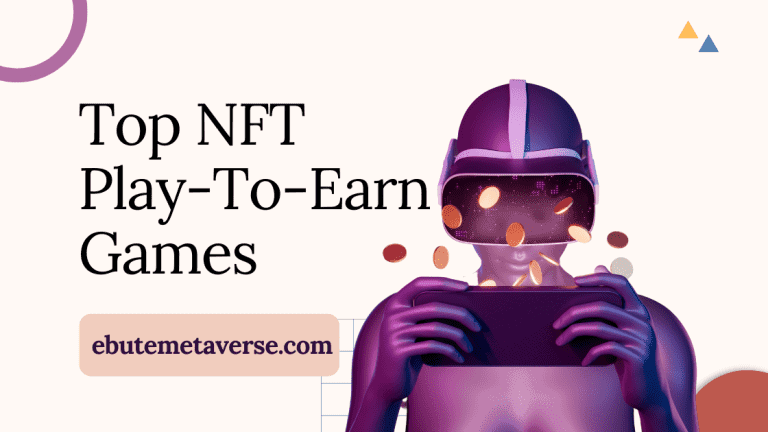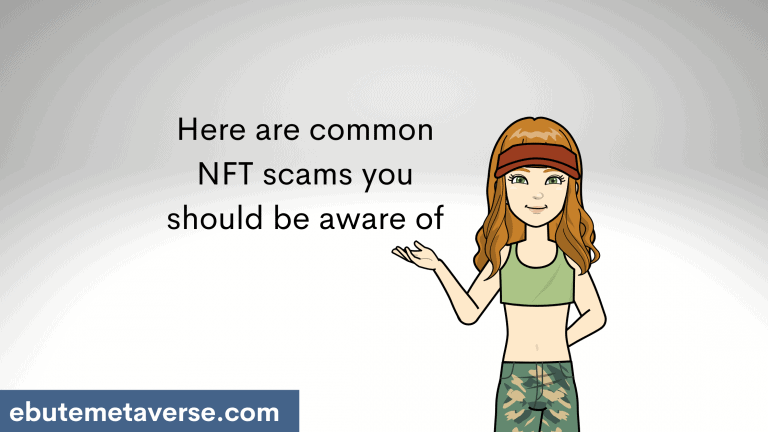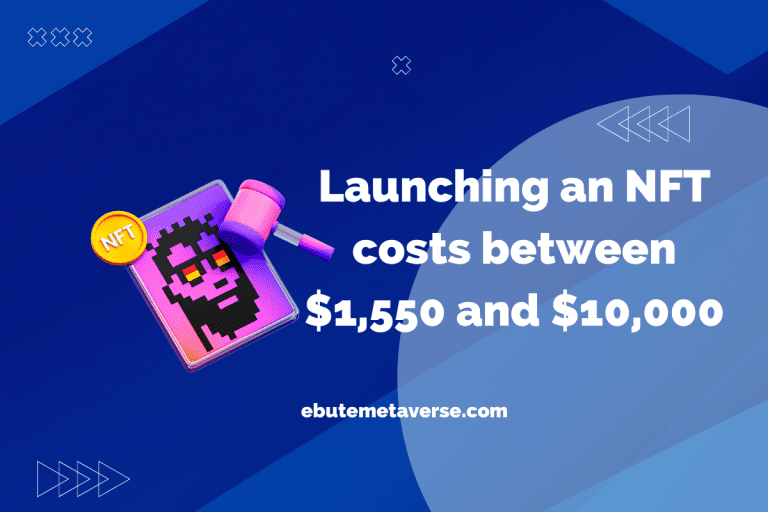Can You Get Royalties from NFTs?: What Creators Should Know
Can You Get Royalties from NFTs?
Yes, you can get royalties from Non-Fungible Tokens (NFTs). One of the most attractive features of NFTs is the ability to attach a “royalty” to the artwork. This allows the original creator to receive a percentage of the sale each time someone resells the token on the secondary market.
What Are NFT Creator Royalties?
The concept behind NFT royalties is to provide creators with a means to earn ongoing income from their digital creations. Think of it as an ongoing commission on the value your creation generates.
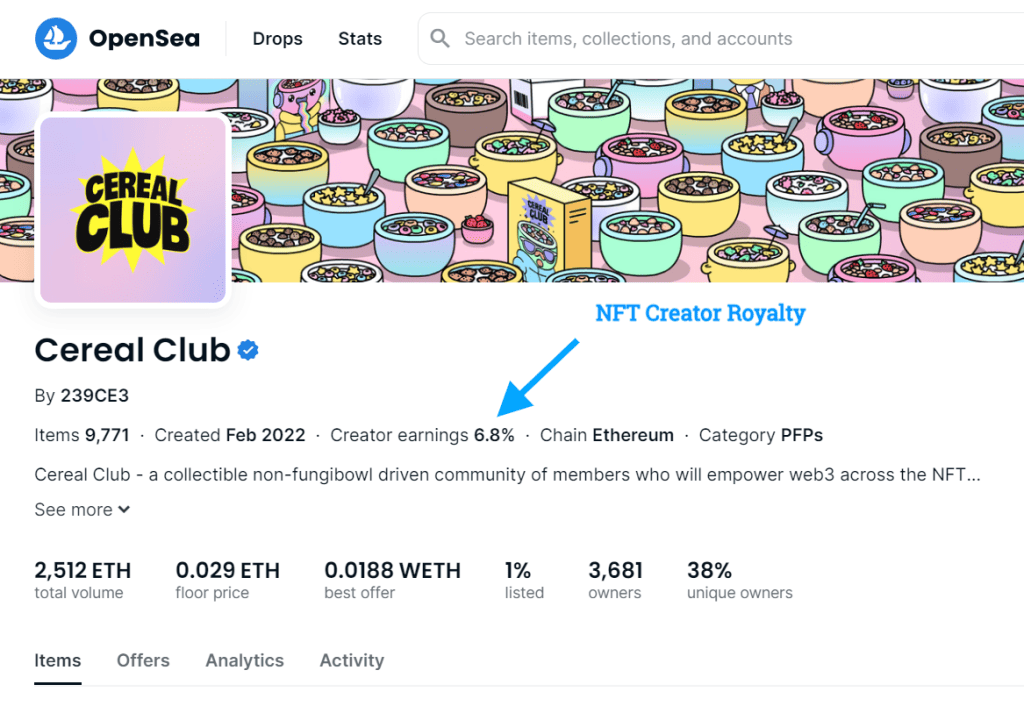
When an NFT is first minted and sold, the creator can set a royalty fee, usually between 2.5% and 10% of the sale price.
Now, here’s the cool part—this royalty fee is automatically executed through a smart contract whenever the NFT is sold in the future.
NFT royalties explained: an artist creates an amazing NFT artwork and sets a 10% royalty rate. They manage to sell the piece for 1 ETH, and life is good. But wait, there’s more! The NFT gains traction and is eventually resold for a whopping 10 ETH.
Guess what? The artist receives 1 ETH as their royalty, a nice chunk of change that reflects the growing value of their creation.
It’s a win-win situation, with the artist benefiting from the rising popularity and worth of their work long after the initial sale.
How Do NFT Creator Royalties Work?
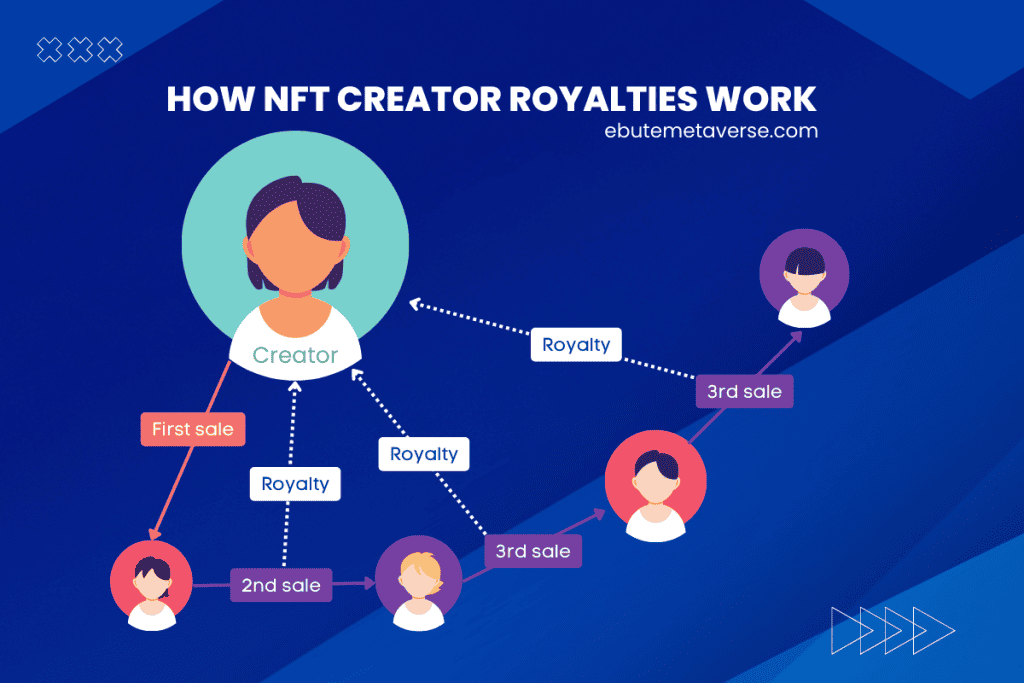
Behind the scenes, smart contracts, the brainy codes embedded in NFTs, hold the key. These contracts include instructions on the NFT royalty percentage you, the creator, receive with each subsequent sale.
Let’s say an artist, Alex, creates an NFT with a built-in 10% royalty. When he sells the NFT to a buyer, Beth, for 5 ETH, he receives the full amount.
The NFT gains value, and Beth resells it to another buyer, Charlie, for 20 ETH. The smart contract governing the NFT automatically transfers 10% of the sale (2 ETH) to Alex.
Later, when Charlie resells the NFT to Dana for 50 ETH, the contract again ensures 10% of the sale (5 ETH) goes to Alex.
Thus, the smart contract controls the payout of royalties, allowing Alex to continually benefit from future sales of his artwork.
Maximizing NFT creator royalties requires strategy. While setting a high royalty may seem appealing, it could deter buyers. Balance your work’s worth with market expectations when deciding on your NFT royalty percentage.
What Is a Good Royalty Rate for NFTs?
Royalties typically range from 2.5% to 10% of resale prices. Your potential royalties depend on your chosen platform, which has different rules. Some include standard creator royalties; others let you set the percentage.
Marketplaces like OpenSea, Rarible, and SuperRare support NFT creator royalties. But it’s important to research each platform’s terms to ensure they align with your goals.
Consider these factors to make an informed decision:
Market Norms: Take a peek at what other creators are offering as royalty rates on popular platforms. It helps to get a sense of the prevailing trends.
Value of Your Work: Gauge the uniqueness, demand, and perceived value of your creations. Highly sought-after pieces might warrant a higher royalty rate, while those just starting out may find it beneficial to start lower to attract buyers.
The Importance of NFT Royalty Fees
Now, let’s uncover the real gems of NFT Royalty fees and why they matter for creators like you:
Passive Income: Royalty fees open the door to a delightful stream of ongoing income. You continue to earn a percentage from subsequent sales, allowing you to reap the rewards even after the initial purchase.
Fair Compensation: NFTs give you control over your work and provide an avenue for fair compensation when your creations change hands. Royalty fees ensure that you are rewarded for the increased value of your art, even in the vibrant secondary market.
How Much NFT Royalties Can One Expect?
The royalties you can expect from NFTs can vary widely. It all depends on factors like the platform you choose, your reputation as an artist, and the demand for your work.
Different NFT platforms have different royalty structures. Some let you set your own rates, while others have fixed percentages. So, it’s important to understand the royalty terms of the platform you use.
As an artist, your reputation and popularity play a big role. You can set higher royalty rates and generate more sales if you’re a well-known NFT artist and in high demand. Your fan base and recognition can attract collectors who are willing to pay more for your NFTs, resulting in higher royalties.
NFTs with Royalties: Practical Examples
To illustrate the potential of earning royalties from NFTs, let’s explore a couple of case studies:
1. Beeple’s “Everydays: The First 5000 Days”: In March 2021, Beeple sold this artwork as an NFT for $69 million, while keeping a 10% royalty on future resales. This means Beeple will continue to receive a 10% royalty as the artwork is traded in the secondary market.
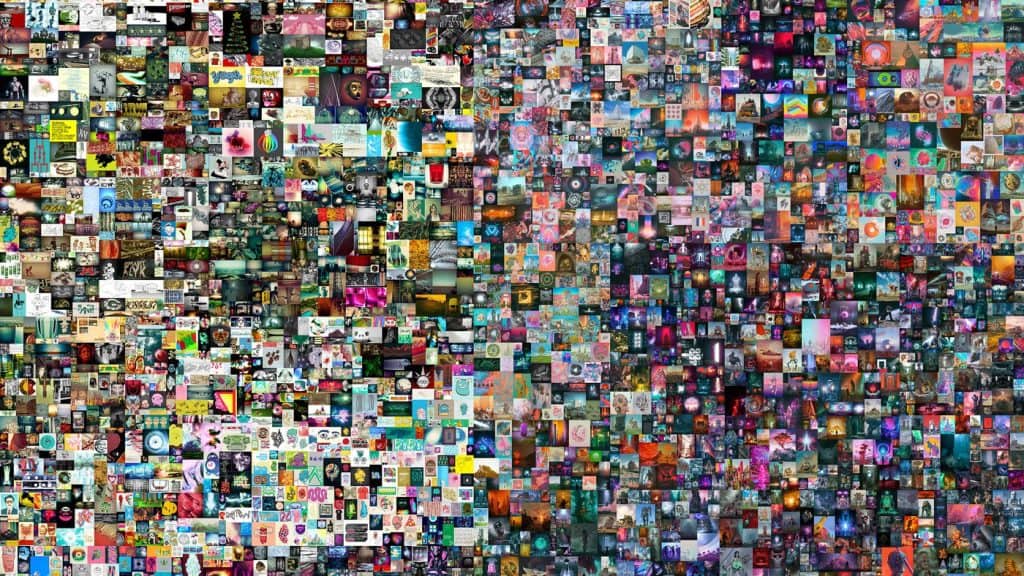
With such a high initial sale price, Beeple has a tremendous opportunity to earn substantial income from this NFT in the future.
2. WonderPals: WonderPals NFTs incur a 5% fee on secondary sales; OpenSea receives 2.5% and the other 2.5% goes to the WonderPals project.
For instance, selling a WonderPals NFT at the average price of 0.35 ETH (1,057 USD at an exchange rate of 3,020.66 USD/ETH) would result in a 53 USD royalty fee split between OpenSea and the project owners.
3. Bored Ape Yatch Club: Another notable example is the BAYC. Bored Ape Yacht Club’s Bored Ape #7537 found its first buyer at a price tag of $229 (equivalent to 0.08 ETH).
The same NFT was eventually resold for a staggering sum of over $1.22 million a year later. The creators, Yuga Labs, received a hefty royalty of approximately $30.5k, thanks to the 2.5% royalty stipulated in the NFT’s smart contract.
Do NFT Owners Get Royalties?
No, NFT owners—those who buy the NFTs from the original creators—usually do not receive royalties from future resales. Their profit comes from selling the NFT for a higher price than they originally paid.
Types of NFT Royalties
There are three basic types of NFT creator royalties that you can get on different NFT marketplaces. Let’s take a look at them.
Fixed royalty
A fixed royalty is a predetermined amount of money that you’ll receive regardless of the number of times your asset is resold. Marketplaces that offer fixed rates don’t allow you to increase or decrease your NFT royalty percentage. You simply get the same percentage every time your asset is resold, even if it sells multiple times. Superrare is an example of a marketplace that operates this form of royalty.
Flexible royalty
In this case, you’re allowed to choose the NFT royalty percentage that suits you, the art creator. For instance, Opensea gives you a 0-10% limit to choose your royalty, while others might give you a higher option.
Zero royalty
In a situation where you are not allowed to receive royalties on a platform, then you’re getting zero royalty. This usually occurs when you mint your NFT in sites that are yet to offer the royalty option.
How to Get Royalties from NFTs?

If you’re looking to earn royalties from your NFTs, here are some important insights and best practices to consider;
Create Your Digital Artwork: Start by creating a unique digital asset you want to mint as an NFT. This could be a piece of digital art, music, or even video.
Setup Your Wallet: To interact with OpenSea, you need a digital wallet like MetaMask. Install it and add Ethereum to pay for transaction fees (gas fees).
Connect Your Wallet to OpenSea: Visit OpenSea’s website and click on “My Profile” at the top right. Connect your MetaMask wallet following the prompts.
Mint Your NFT: Click on “Create” at the top right and follow the steps to upload your digital asset, add details, and mint it as an NFT.
Set Your Royalties: During the minting process, specify the NFT royalty percentage you wish to receive from each resale. OpenSea allows you to set a percentage of up to 10%.
List Your NFT for Sale: Once your NFT is minted, you can list it for sale on OpenSea. Set your price and wait for a buyer. When someone purchases it, you’ll receive the initial sale price.
Receive Your Royalties: Each time your NFT is resold on OpenSea, the platform will automatically send your specified royalty to your wallet. These royalties are automatically calculated and distributed based on the smart contract of the NFT.
Problems with NFT royalties
An NFT creator might sometimes stop receiving royalties for his digital assets. The reason why this happens is because of a change in the marketplace.
For instance, you minted your NFT on Opensea, placing it on a specific NFT royalty percentage for obtaining royalties. Now, if your first buyer buys from you and resells it to someone else on OpenSea, you get your benefits.
The second buyer may decide to take the asset from Opensea to Foundation and sell it there. This move renders it void since the NFT royalty percentage smart contract was originally on OpenSea. So, you won’t get any more NFT creator royalties from subsequent sales.
Frequently Asked Questions
Do NFT royalties expire?
NFT royalties don’t expire. Your NFT can only stop generating royalties if the second or third downline buyers remove it from the marketplace or transfer it out of the platform. If you want to know whether your NFT is still earning royalties, check the status page of the market you’ve chosen.
What is a good royalty rate for NFT?
The standard NFT royalty is between 5% and 10%. The owner decides how much to charge in royalties during the minting most of the time. It gives the person who made the NFT a share of the sale price every time it is sold on a market.

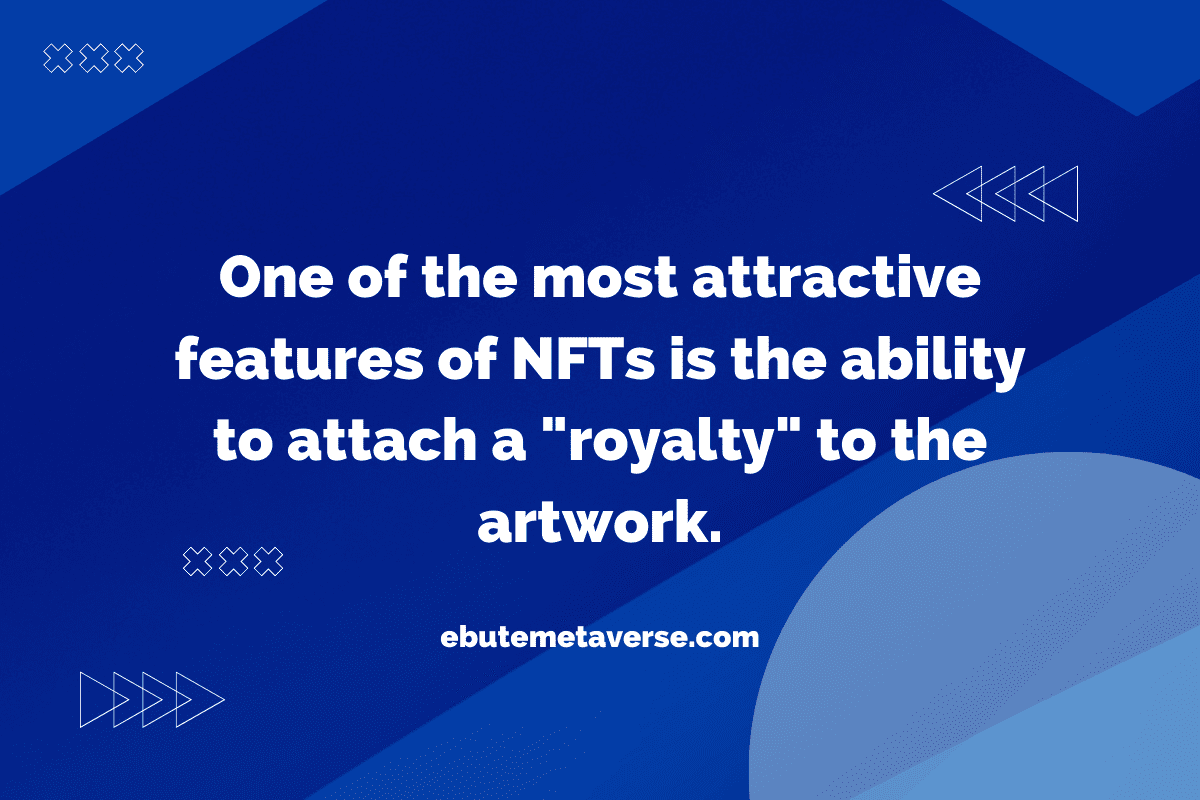

![Best NFT Creator App for Android - Top 12 [Updated] 7 best nft creator app for android](https://ebutemetaverse.com/wp-content/uploads/2022/09/nft-creator-app-768x432.jpg)
